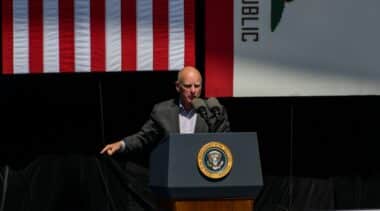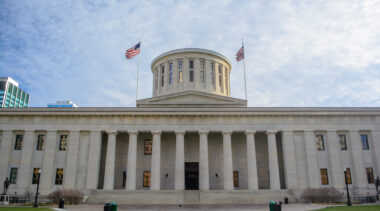Roderick Crane is a senior fellow at Reason Foundation's Pension Integrity Project.
-
Important public pension reforms are under threat in several states
Policymakers seem ready to repeat pension errors that would increase debt and costs for taxpayers and state and local governments.
-
Sharing defined benefit pension costs: A survey of public sector practices
Policymakers should design pension plans that balance financial sustainability with retirement security.
-
Pennsylvania’s proposed public pension increases would be costly to taxpayers
Pennsylvania's proposed increase in public pension benefits would add about $1.19 billion in unfunded liabilities.
-
Claims that public pension reforms lead to negative impacts are unfounded
Here's why public policymakers should not be swayed by common misleading claims about public pension reform.
-
Nearly half of public employees in defined benefit pension plans will never receive a payout
Defined contribution and cash balance plans can do a better job of providing retirement benefits to more employees.
-
How Oklahoma’s public pension reforms led the state employees’ plan to full funding
The Oklahoma Public Employees Retirement System, which was only 66% funded in 2010, now has more than 100% of the funds needed to pay for promised pension benefits.
-
Congress should remove IRS rules restricting public pension reforms for current employees
There is no good public policy reason why only new hires can benefit from retirement plan modernization.
-
Public pension plans should not get into the private retirement annuity business
Creating new, complex, government-run enterprises in each state would not improve retirement security for private sector workers.
-
Pennsylvania’s proposed pension bills don’t meet best practices for cost-of-living adjustments
The result would be another level of unfunded liabilities that must be paid for by Pennsylvania taxpayers.
-
Public sector unions continue to advocate for pension plans that don’t benefit most members
The workforce has changed and policymakers should focus on retirement plan options that offer long-term financial security for the broadest cohort of public employees.
-
Comparing the Ohio PERS defined contribution plan to gold standards
The Ohio Public Employee Retirement System's Member Directed Plan meets several best practices but needs improvement in other key areas.
-
Comparing the Ohio State Teachers Retirement System’s offerings to gold standards in retirement plan design
Ohio STRS is a national leader in offering flexibility and choice to workers but can make improvements.
-
Examining the control state and local governments have over public pension plans
State and local governments have wide latitude to change or modify most aspects of their retirement plans' design, funding, and administration.
-
“The Liability Trap” authors’ critique of pension fiduciary model misses the mark
Requiring a fiduciary responsible for public dollars to adhere to objective criteria and remain oriented towards achieving the pecuniary goals of the pension trust is the most basic policy.
-
SECURE Act 2.0 requires private sector to use automatic enrollment for retirement plans
Over 80% of state and local government employees are in retirement plans, compared to 52% of private sector employees.
-
Alaska’s defined contribution retirement plan is better for most workers than defined benefit plan
While the defined contribution plan in place in Alaska could be enhanced, it is a plan that recognizes the reality of the modern workforce.
-
Ways the SECURE Act 2.0 can help people save for retirement
The law provides additional flexibility for tax optimization of retirement distributions and reduces tax code rules that perversely inhibit lifetime annuity solutions.
-
A better public sector retirement plan for the modern workforce
The new PRO Plan meets the needs of public workers, helps government employers recruit and retain workers, and stops public pension debt from growing.


















